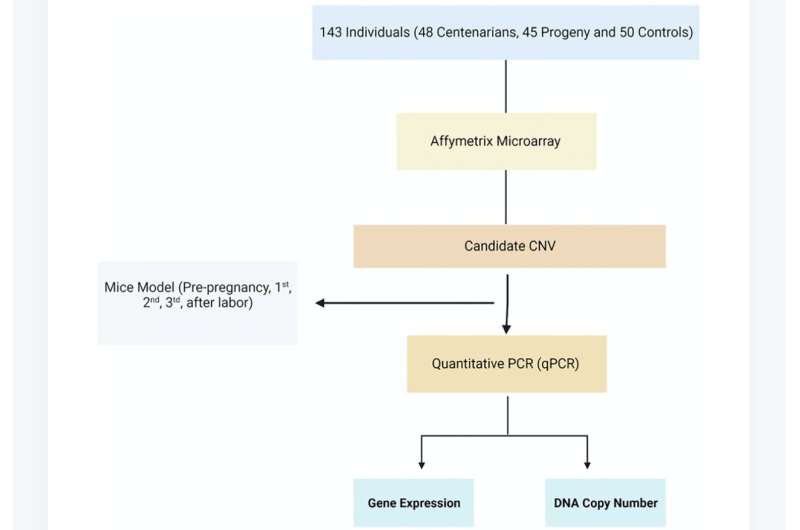This article has been reviewed according to Science X's editorial process and policies. Editors have highlighted the following attributes while ensuring the content's credibility:
fact-checked
proofread
Study: Copy number variation implements pregnancy as an aging model

A new research paper titled "Copy number variation as a tool for implementing pregnancy as an aging model" has been published in Aging.
Copy number variations (CNV) are a major contributor to genome variability. CNVs have been linked to aging and other degradable phenotypes such as pregnancy physiology. In this new study, researchers Mariana Andrawus, Lital Sharvit, Noga Touitou, Batia Lerrer, Haim Y. Cohen, and Gil Atzmon from the University of Haifa and Bar-Ilan University used CNVs from pregnant mice to demonstrate how pregnancy can be used as a model of aging.
The researchers write, "We hypothesize that pregnancy can serve as a model for aging by demonstrating [similar biomarkers, pathologies, and genetic and epigenetic effects]. To test this hypothesis, we designed a study that assesses CNVs associated with human longevity (unpublished results) in pregnancy."
Candidate CNVs were selected by applying case-control analysis in human centenarians compared with control groups. These CNVs were aligned with the mouse genome and their copy variation was assessed using qRT-PCR in liver and blood tissue samples from pregnant mice throughout pregnancy (baseline; first, second, and third trimester; post-partum). Eight of the ten selected CNVs demonstrated a significant decline/increase trend throughout the pregnancy followed by opposite direction soon after delivery in the liver and blood of the mouse tissues.
Furthermore, significant differential expression was detected among the candidate CNVs' close vicinity genes (APA2A, LSS, RBDHF1, PLAAT1, and SCL17A2), but not in the WSCD2 gene. Establishing a genetic link between longevity and pregnancy is a significant step toward implementing the pregnancy process as a model for aging. These results in pregnant mice highlight the mechanism and similarities between pregnancy and aging.
"Investigating the mechanisms that cause such rejuvenation after labor could change our aging treatment paradigm," the researchers conclude.
More information: Mariana Andrawus et al, Copy number variation as a tool for implementing pregnancy as an aging model, Aging (2023). DOI: 10.18632/aging.204936




















